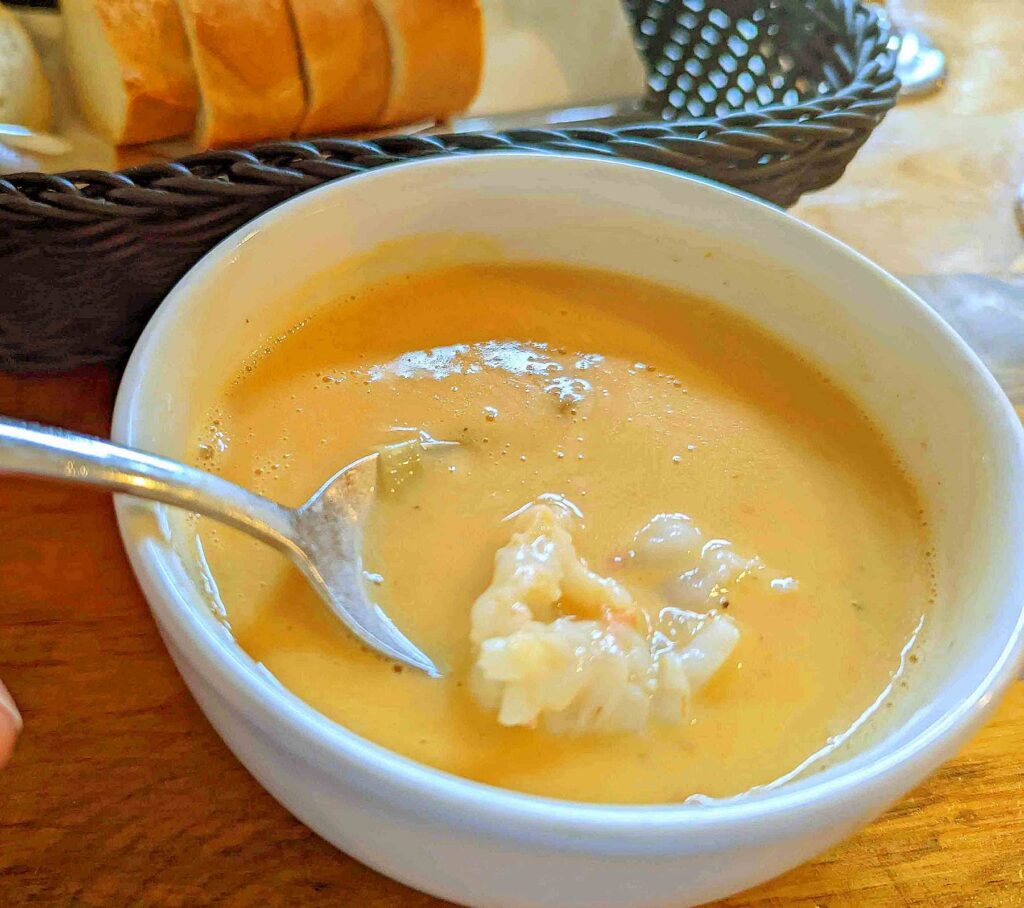
We had read that Iceland’s famous ‶lobster soup″ was a special dish widely served at the winter holidays. Given that there’s only about four hours of daylight at Christmas, Icelanders definitely need something to cheer them up. But during our Reykjavik visit in late August, lobster soup was ubiquitous on the city’s menus. So much for seasonality — or don’t believe everything you read on the Internet. According to Iceland Fisheries, the lobster season is April into September
All of our research — including asking locals — pointed us to the Seabaron, or Sægreifinn in Icelandic (Geirsgata 101, Reykjavík; +354 553 1500; facebook.com/saegreifinn.seabaron). Everyone agreed that it was famed for lobster soup. The casual grill house squats at the harbor’s edge in a lurid green building. It does not accept reservations, so there’s almost always a line waiting to get in. We arrived one Sunday evening about 20 minutes after the doors opened at 6 p.m. and were finally called in around 7 p.m. The snug quarters were perfect for a chilly, foggy evening (hardly unheard of in Reykjavik).
Seabaron serves more than just lobster soup

Although the Seabaron is known for lobster soup, it also serves skewers of any of eight different fin fish. First stop once you enter is the fish case, which displays those skewers so you can make your choice. Mixed skewers of potatoes and vegetables are another option. They all come with delicious fresh bread. We ordered lobster soup, a skewer of wolffish (a nasty looking but delicious North Atlantic bottom dweller), and some mixed potatoes and vegetables. Seating is communal and we were directed to a table next to a somewhat unsettling lifesize wax figure of the original sea baron. He was a Reykjavik fisherman who founded the restaurant once his fishing days were over.
The fish skewer was delicious. It’s hard to mess up fish that fresh. The lobster soup was a revelation, though. David thought he knew a thing or two about lobster, having been a Maine lobsterman a long time ago. The bisque was a salty but intense shell stock with a touch of cream and tomato. The pieces of lobster were small and soft, so he assumed they were body meat. It took a while to sink in that ‶lobster″ did not mean the big-clawed crustaceans of the Maine coast, or even the smaller European cousin that looks like a greener, smaller version of Maine lobster.
This ‶lobster″ was the crustacean variously known as Dublin Bay prawn or Norway lobster in northern Europe, as ‶langoustine″ in French, or ‶cigala″ in Spain. The English call them ‶scampi,″ but that usually refers to the peeled tails. In some ways, langoustines make a better bisque than lobster. They have a sweet, briny taste somewhere between crab and lobster, but the meat is far more tender than the lobster tails often featured in American lobster bisques. Those Icelanders know what they’re doing.

